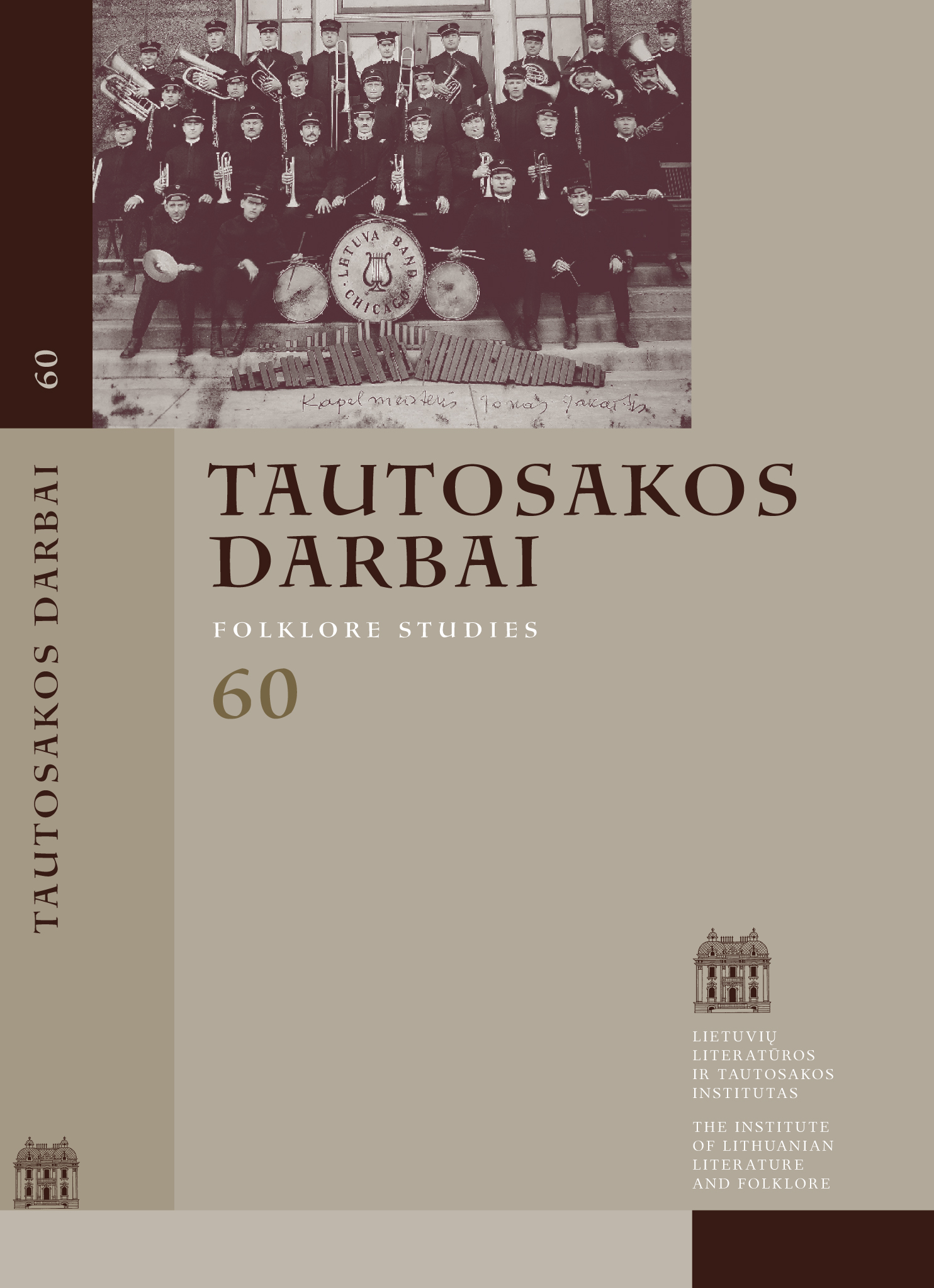„Ta pasaka paeina iš Azijos par vainas...“ Kareivis pasakotojas Lietuvos kaimo bendruomenėje XIX a. antrojoje–XX a. pirmojoje pusėje
Santrauka
Straipsnio tikslas – įvertinti kareivių vaidmenį lietuvių pasakų sekimo tradicijoje, nustatyti, ar yra duomenų, rodančių, kad kareiviai sekė pasakas, kokiomis aplinkybėmis šiuos kūrinius jie išmoko. Gilinamasi į lietuviškų pasakų tekstus, kuriuose užsifiksavusios kareiviško gyvenimo detalės, rodančios, kad šiuos naratyvus pasakojo kareiviai; tiriami kareiviai pasakotojai ir jų socialinė aplinka. Daugiausia remiamasi XIX–XX a. pradžioje užrašytu folkloru, tačiau dėl kontekstinės medžiagos stokos pasitelkiami ir XX a. antrojoje pusėje užfiksuoti duomenys. Aiškėja, kad kareiviai buvo savotiški tarpininkai, per kuriuospasakos Lietuvą pasiekdavo iš tolimesnių kraštų. Karinės tarnybos metu iš ginklo brolių pasisėmę pasakojimo patirties, grįžę namo ir pasakodami svetur nugirstas istorijas, jie tapdavo žinių, patirčių, o kartu ir savitų pasakų ar tam tikrų motyvų pernešėjais. Pasakų sekimas šios profesijos žmonėms buvo savotiška pramoga, bendravimo būdas ar net socialinio statuso klausimas. Tokiuose pasa
Atsisiuntimai
Skaitomiausi šio autoriaus(ų) straipsniai
- Jūratė Šlekonytė, Pasakų sekėja XX–XXI a. sandūroje: subartoniškės Antaninos Čaplikienės atvejis , Tautosakos darbai: T 64 (2022)
- Jūratė Šlekonytė, Lietuvių stebuklinė pasaka „Sutartis nesiprausti“ (ATU 361): europinis kontekstas ir lokalieji ypatumai , Tautosakos darbai: T 66 (2023): Tautosakos darbai
- Jūratė Šlekonytė, Pasakų sekėjos moterys ir jų repertuaro ypatumai , Tautosakos darbai: T 67 (2024): Tautosakos darbai
- Jūratė Šlekonytė, Lietuvių pasakų tyrimų šimtmetis: nuo tradicinės komparatyvistikos iki šiuolaikinių metodų , Tautosakos darbai: T 49 (2015)
- Jūratė Šlekonytė, Augustas Schleicheris – pirmasis lietuviškų pasakų skelbėjas , Tautosakos darbai: T 61 (2021)
- Jūratė Šlekonytė, Nauja knyga apie stebuklinių pasakų simbolizmą , Tautosakos darbai: T 67 (2024): Tautosakos darbai
- Jūratė Šlekonytė, Lietuvių liaudies pasakos „Antimi pavirtusi sesuo“ populiarumo fenomenas , Tautosakos darbai: T 57 (2019)
- Jūratė Šlekonytė, Pirmieji fundamentinio čekų pasakų leidinio tomai , Tautosakos darbai: T 64 (2022)
- Vita Džekčioriūtė, Aušra Žičkienė, Jūratė Šlekonytė, Gražina Kadžytė, Jurgita Ūsaitytė, Lina Būgienė, Daiva Vyčinienė, Kronika , Tautosakos darbai: T 48 (2014)
- Jūratė Šlekonytė, Lietuvininkų sakmės apie laukinę medžioklę: vaizdinio kilmės klausimu , Tautosakos darbai: T 47 (2014)
